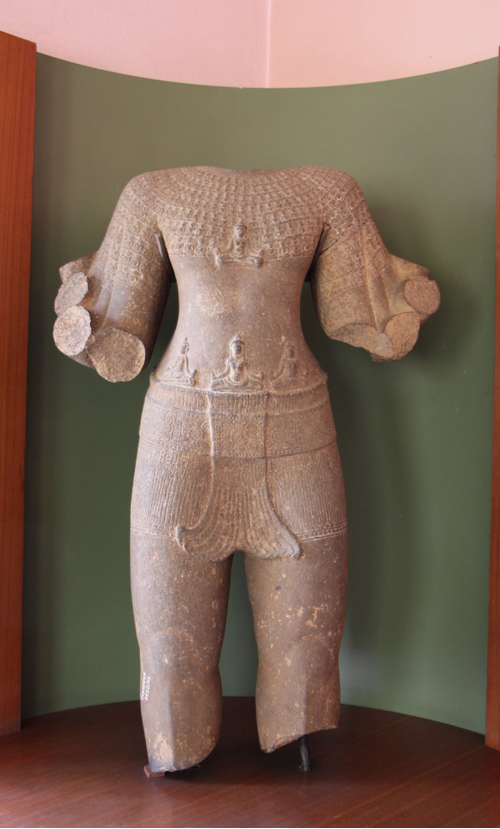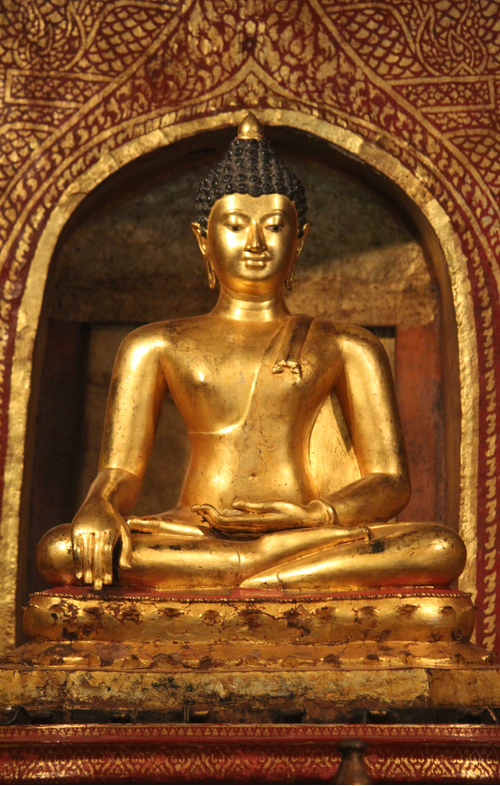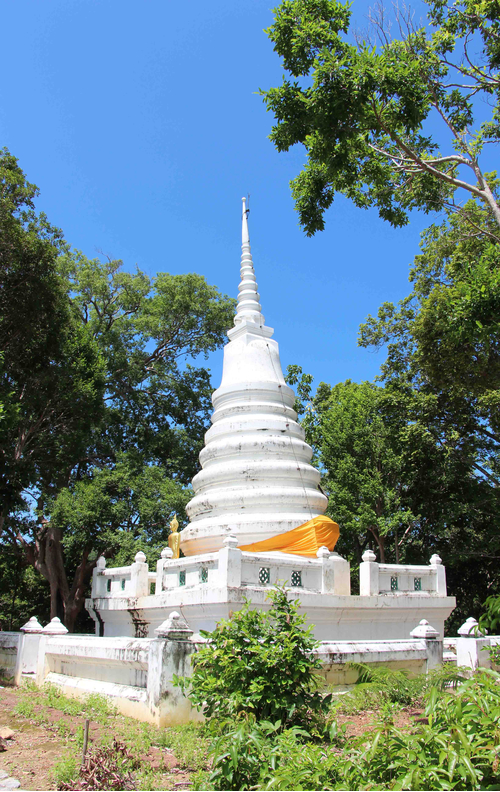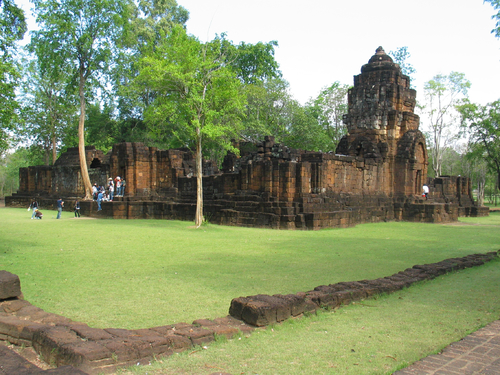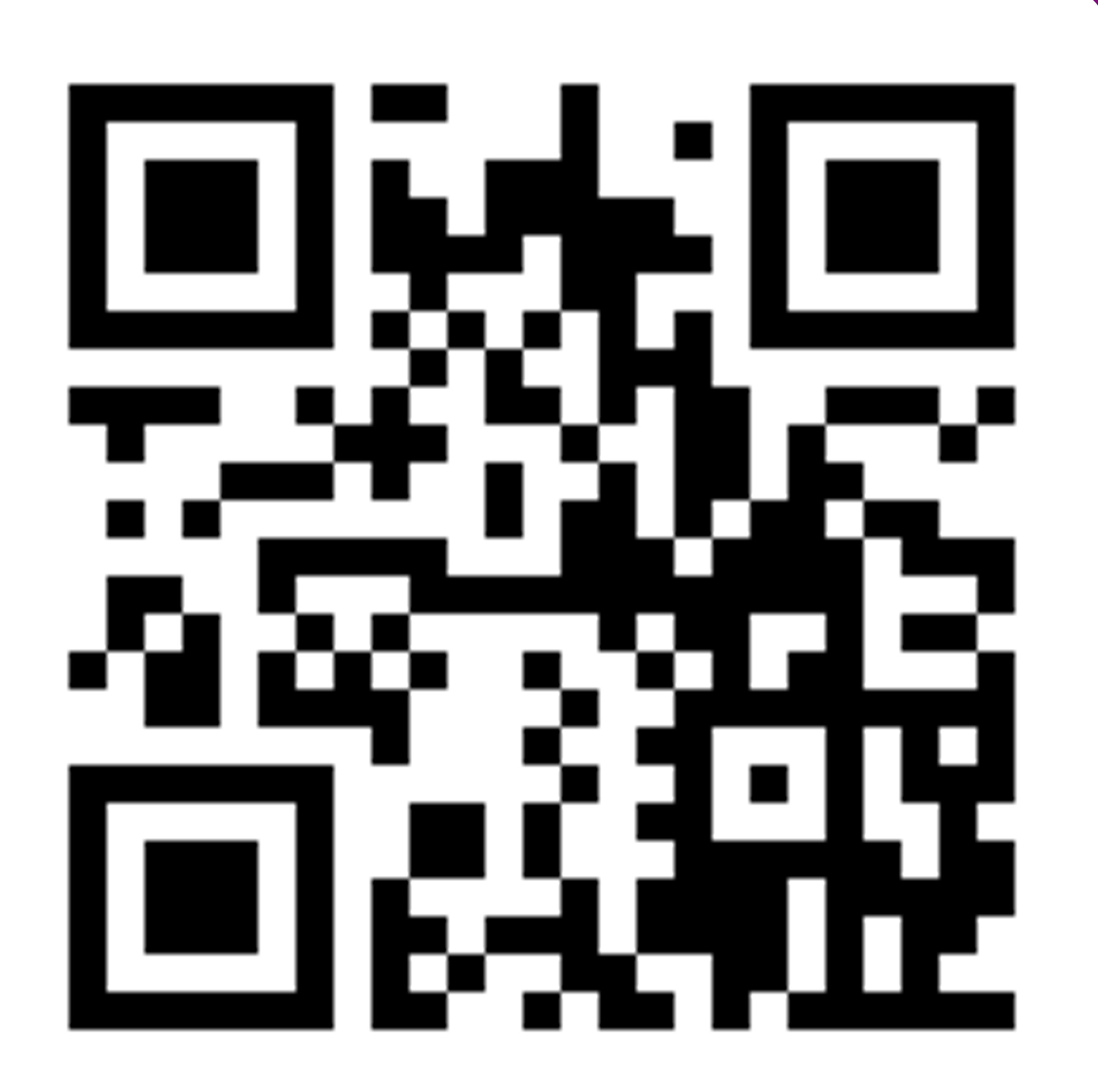Artwork Search
Arts in Southeast Asia Database
SculptureThe radiant Avalokiteshvara Bodhisattva
The radiant Avalokiteshvara Bodhisattva is in a standing position but with missing limbs as in the head, hands, shins, and feet. The chest, shoulders and upper arms of the body are decorated with many rows of Buddha images that looks like armor.There is a large image of a person in the middle of the chest and the waist and this might refer to Prachya Paramita. The image wears shorts with roughly engraved pattern. Its lower body from the thigh to the feet is in disproportion according to the sculpture in Bayon style.
SculptureThe radiant Avalokiteshvara Bodhisattva
The radiant Avalokiteshvara Bodhisattva is standing on a square base. Its condition is complete except for the 8 hands that are missing. The sculpture has a square face, closed eyes, with the corners of the mouth lifted slightly as in Khmer Arts, Bayon style. The hair is put up in a cylinder shape and the hair is decorated with the image of Amitabha Buddha and many other Buddha images. The upper part of the body is decorated with rows of Buddha images that looks like armor. There is a large image of a person in the middle of the chest and the waist and they might refer to Prachya Paramita. All 8 hands are missing. The image wears shorts with roughly engraved pattern. His lower body from the thigh to the feet is in disproportion. Every toe has on a ring.
PaintingThe Moral Painting in Viharn Lai Kham
The mural painting at the Viharn Lai Kham has many parts, on the wall at the end of the viharn is a line of Buddhas in the past, the north wall is a picture of Suwan Hong, the south wall is a picture of Golden Conch, above the picture of Suwan Hong and Golden Conch is a Thep Chumnum. The image appears to be 3D and more realistic which is influenced by Rattanakosin art that influenced by Western and Burmese art such as the Payathat architecture form or various royal dressing and “Kak” picture that depicting the life of the people in greater amounts than murals in the central region.
SculpturePhra Saakya Singh
This Buddha image sits in a full-lotus seat on a lotus base in the octagon plan which is cast sticked to the Buddha image displaying the Subduing Mara posture. It has a round face, big knotted hair, high ushnisha with lotus shape on top, look-straight eyes, slightly open mouth, knot jaw, not too fat body, oblique robe and short split ends centipede fang shaped sanghati.
SculpturePhra Buddha Sihing
This Buddha image sits in a full-lotus seat on a lotus base in the octagon plan and shows subduing mara posture. It has a round face, big knot hairs, ushnisha with lotus shape on top, look straight eyes, slightly open mouth, fat body, oblique robe and short split ends centipede fang shaped sanghati above chest.
ArchitectureIsaraphap Chedi Chanthaburi
This brick and cement Chedi is painted in white has a circumambulatory with a wall in a square plan. The wall is decorated with Chinese-style-craved tiles. There is a short wall supporting a bell-shaped element in a round plan. There is a lotus base, a series of three convex moldings, a lotus base with pointed mouldings, all of which are highly extended. Above this is the bell-shaped element, hamika, pillars, spire and finial.
ArchitecturePrasat Muang Singh
Prasat Muang Singh has been fully restored. Laterite was the chief construction material, plastered and decorated with stucco which is now mostly gone. The tower was oriented toward the east.The group of buildings were supported by a high base by which the main sanctuary is at the centre. Roofs of the main sanctuary were now lost. Library is located to the northeast of the main sanctuary. They were all surrounded by a gallery which had gopura/entrances on all four sides topped with prasat-like superstructure. On the eastfront of the base was affixed to the laterite court which should be sheltered by wooden beams and tiled roof, now lost. To the east, there is a trace of gopura which was once connected to the enclosure to the north and south with a cruciform terrace situated in front of the gopura.
SculptureLion with both paws raising from Tra Kieu
Most of animal figures found at Tra Kieu are normally in dynamic movement, typical to this period. The lion figure of this period is also in the moving posture. The lion with the goat’s horn is called Vyala in Indian art.
